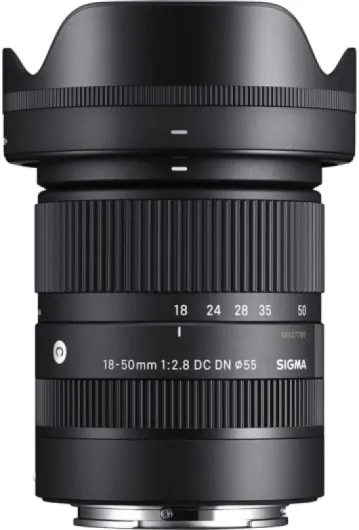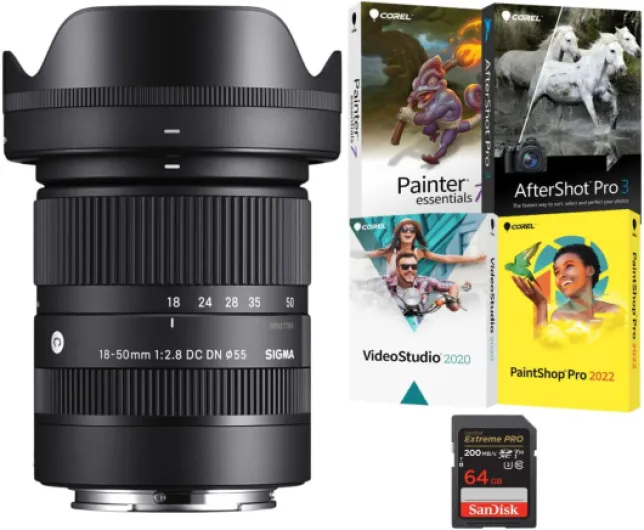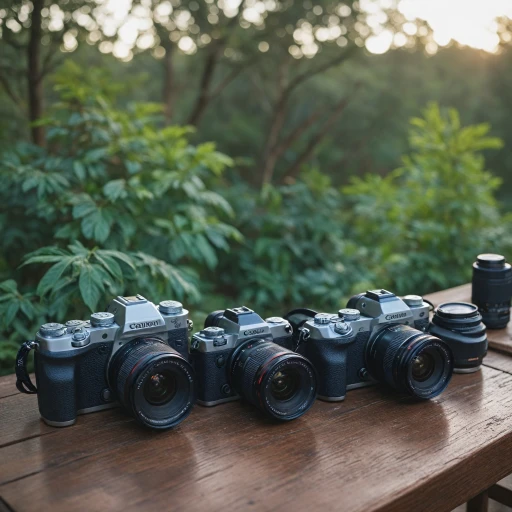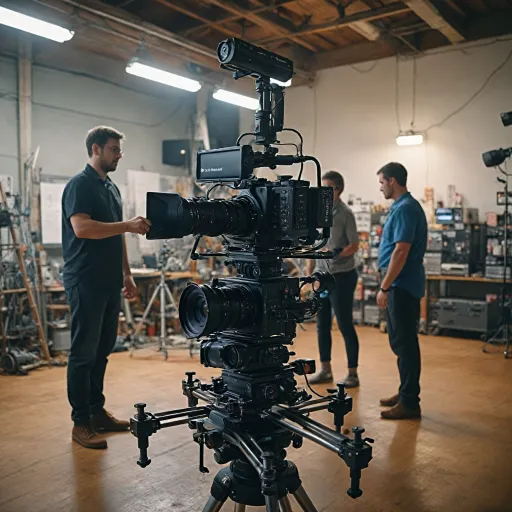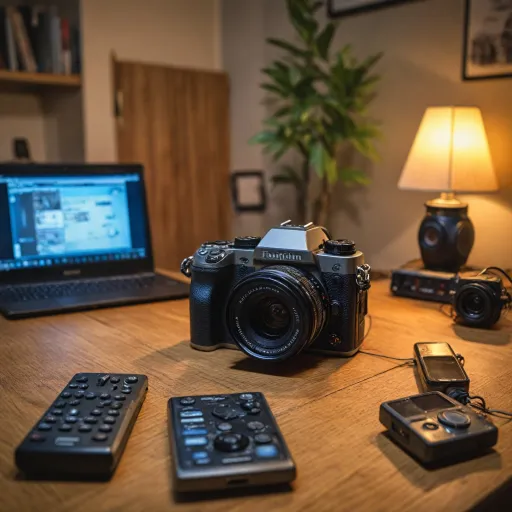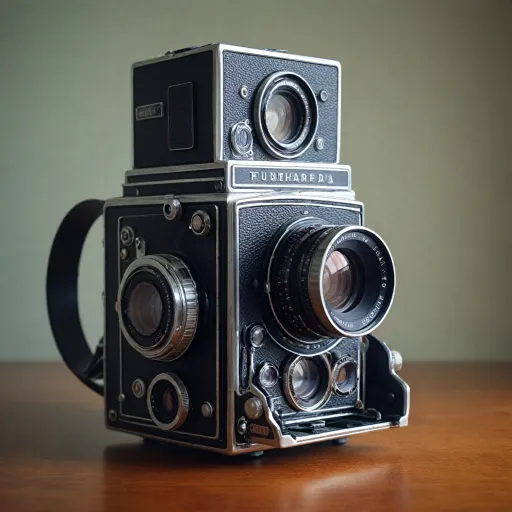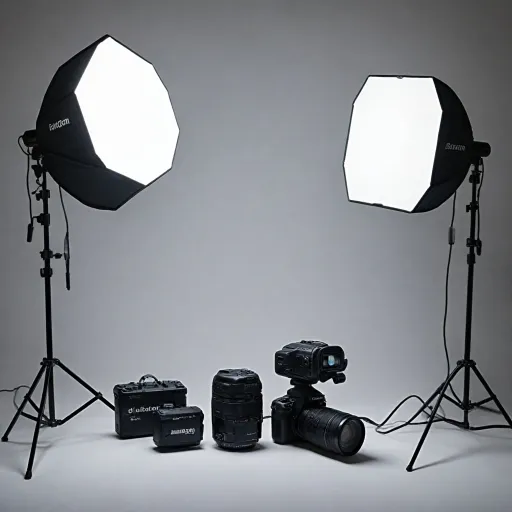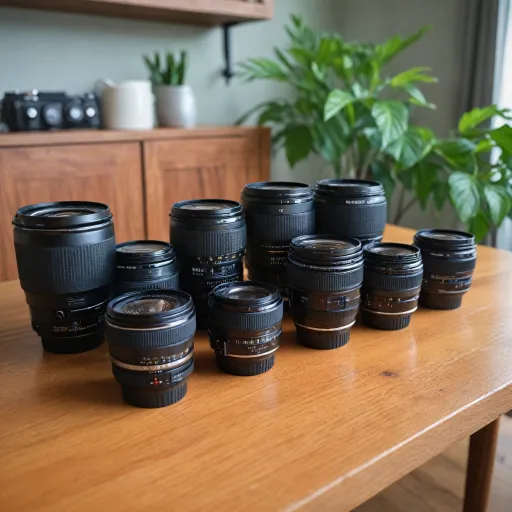
What makes the Sigma 18-50mm f/2.8 lens unique
Why Photographers Notice the Sigma 18-50mm f/2.8
The Sigma 18-50mm f/2.8 lens stands out in the world of digital cameras for several reasons. It’s part of Sigma’s Contemporary line, which means it’s designed to balance performance and portability. This zoom lens covers a versatile focal length range, making it suitable for everything from landscapes to portraits. The constant f/2.8 aperture across the zoom range allows for consistent exposure and creative control over depth of field, even in small light conditions.
Design and Build: Compact Yet Capable
One of the most appealing aspects of this lens is its compact size and lightweight build. For photographers who use camera bodies from brands like Sony, Fujifilm, or Canon, carrying a lighter lens can make a big difference during long shoots. Despite its small form factor, the Sigma 18-50mm f/2.8 doesn’t compromise on image quality or autofocus speed. The lens features a fast and quiet autofocus motor, which is especially useful for capturing spontaneous moments or shooting video with minimal noise.
Versatility Across Camera Mounts
The Sigma 18-50mm f/2.8 is available for several popular mounts, including Sony E-mount and Fujifilm X-mount. This flexibility means it’s compatible with a wide range of cameras, from the latest mirrorless models to established favorites. While it’s not designed for full frame cameras, it’s a strong choice for APS-C sensor users who want a reliable zoom lens for everyday photography. If you’re curious about adapting focusing techniques across different systems, you might find this guide on how to use quick focus on various camera mounts helpful.
Key Features That Matter
- Constant f/2.8 aperture for better control over shutter speed and ISO, even in challenging lighting
- Wide to standard zoom range (18-50mm) covers many shooting scenarios
- Fast, reliable autofocus for both stills and video
- Compact and lightweight design, ideal for travel and street photography
These features make the Sigma 18-50mm f/2.8 a compelling option for photographers looking for a high-quality, versatile lens that won’t weigh them down. As you explore compatibility, image quality, and real-world performance in the following sections, you’ll see how this lens compares to other options on the market and how to maximize its potential with your camera setup.
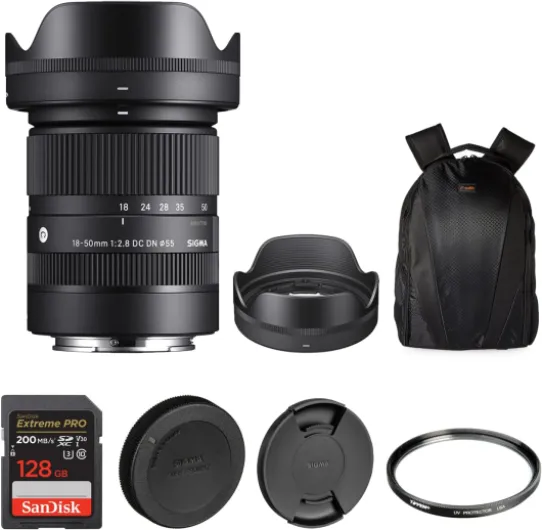
- + High aperture of F2.8 for low light shooting
- + Versatile focal length range of 18-50mm
- + Includes UV filter for lens protection
- + Large memory capacity with 128GB card
- + Includes camera backpack for easy transport
Compatibility with digital cameras
Mount Options and Camera Compatibility
The Sigma 18-50mm f/2.8 lens is designed to be versatile, offering compatibility with several popular camera systems. This zoom lens is available in different mounts, including Sony E-mount and Fujifilm X-mount, making it accessible to a wide range of photographers. If you use a camera Sony or a Fuji camera, you can find a version of this lens that fits your system. However, there is currently no official Canon mount or Canon EOS version, so Canon users may need to look at alternative lenses or adapters for similar performance.
APS-C Sensor Focus
This Sigma lens is built specifically for APS-C sensor cameras, not full frame models. The focal length range of 18-50mm provides a practical zoom range for everyday shooting, from wide landscapes to portrait shots. On an APS-C camera, the effective focal length is equivalent to roughly 27-75mm, depending on the crop factor of your camera. This makes it a flexible choice for photographers who want a single lens to cover multiple scenarios.
Autofocus and Electronic Integration
Autofocus performance is a key consideration for many users. The Sigma 18-50mm f/2.8 features a fast and quiet autofocus system that works seamlessly with compatible cameras. This is particularly useful for capturing sharp images in a variety of lighting conditions, whether you are shooting at a low ISO in bright light or pushing the ISO number higher in small light situations. The lens also supports electronic communication with the camera body, allowing for features like in-camera lens corrections and accurate EXIF data, including lens number and focal length.
Third-Party Lens Support and Availability
As a contemporary lens, the Sigma 18-50mm f/2.8 is widely available through major retailers such as Amazon. It is often compared to other third-party lenses for Sony and Fujifilm mount cameras, offering a balance of image quality, autofocus speed, and affordability. While it does not support Canon EOS or full frame cameras directly, its popularity among APS-C users is notable.
- Available for Sony E-mount and Fujifilm X-mount cameras
- Not compatible with Canon mount or full frame cameras
- Designed for APS-C sensors, offering a versatile zoom range
- Supports fast autofocus and electronic features
For a deeper look at how this lens compares to other options, you might find this comprehensive review of the Bronica SQ 65mm f/4 helpful, especially if you are considering different focal lengths or mount systems.
Image quality and performance in real-world use
Sharpness and Color Reproduction in Everyday Photography
The Sigma 18-50mm f/2.8 lens stands out for its consistent image quality across the zoom range. Whether you use it on a camera Sony, Canon EOS, or a Fujifilm mount, the lens delivers sharp images from edge to edge, especially at the center. The constant f/2.8 aperture allows for good performance in small light situations, letting photographers shoot at lower ISO settings and maintain faster shutter speed. This is particularly helpful for indoor or evening photography, where image noise can become a concern.
Autofocus and Handling in Real-World Scenarios
Autofocus is quick and reliable, thanks to Sigma's contemporary design. The lens locks focus smoothly, making it suitable for both stills and video. On a camera with a Canon mount or Sony mount, the autofocus motor is quiet, which is useful for recording video or capturing candid moments. The minimum focusing distance is short enough to allow for close-up shots, adding versatility to your photography kit.
Performance Across Different Camera Systems
Whether mounted on a Fuji, Canon, or Sony camera, the Sigma 18-50mm f/2.8 adapts well. On APS-C cameras, the effective focal length gives a practical zoom range for landscapes, portraits, and street photography. While it is not a full frame lens, its optical quality competes with more expensive lenses. The lens number and ISO focal range make it a strong choice for photographers who want flexibility without sacrificing image quality.
Low Light and Versatility
The wide aperture and efficient optical design help capture clear images in challenging lighting. This is especially useful for events, travel, or any scenario where you need to react quickly to changing conditions. The lens is also lightweight, making it easy to carry for long shoots or travel photography. For those interested in flash photography, pairing this lens with a reliable flash unit can further enhance results. For example, you can explore options like the Godox V100 Sony flash with lithium battery for improved lighting control.
- Consistent sharpness across the zoom range
- Good color rendering and contrast
- Reliable autofocus on multiple mounts (Canon, Sony, Fujifilm)
- Performs well at low ISO and fast shutter speeds
- Lightweight and easy to handle
Strengths and weaknesses of the Sigma 18-50mm f/2.8
Where the Sigma 18-50mm f/2.8 Excels
The Sigma 18-50mm f/2.8 lens stands out for its versatility and compact design. For photographers using APS-C cameras from brands like Sony, Fujifilm, and Canon, this zoom lens covers a practical focal length range. The constant f/2.8 aperture is a major advantage, allowing more light for low-light shooting and creative depth of field control. Autofocus performance is quick and generally reliable, making it suitable for both stills and video. Its lightweight build is a plus for travel or street photography, where carrying a heavy lens can be a burden.
- Wide to standard zoom range (18-50mm) for landscapes, portraits, and everyday scenes
- Consistent f/2.8 speed lens for better results in small light conditions
- Available in popular mounts like Sony E, Fujifilm X, and coming for Canon EOS R (check mount compatibility before buying)
- Contemporary design with modern autofocus technology
Potential Drawbacks to Consider
While the Sigma 18-50mm f/2.8 is impressive, it’s not without limitations. The lens is designed for APS-C sensors, so it’s not suitable for full frame cameras without cropping. Some users may notice minor softness at the edges when shooting wide open at f/2.8, especially at the extremes of the zoom range. There’s also a bit of distortion and vignetting at 18mm, though these can often be corrected in-camera or during post-processing. The lack of built-in image stabilization means you’ll need to rely on your camera’s IBIS or use faster shutter speeds, particularly in low light.
- Not compatible with full frame cameras without crop
- Edge sharpness can drop at wide apertures and extreme focal lengths
- No optical stabilization—important for handheld video or slow shutter speeds
- Some distortion and vignetting at the wide end
Mount and Compatibility Nuances
The Sigma 18-50mm f/2.8 is available for Sony E-mount and Fujifilm X-mount, with a Canon mount version anticipated. Always verify the mount and camera compatibility, especially if you use a Canon EOS or Fuji camera. The lens number and ISO focal range are optimized for APS-C sensors, so check your camera’s specs before purchasing. On platforms like Amazon, you’ll find multiple listings, so double-check the mount and version to avoid confusion.
Who Should Consider This Lens?
This lens is ideal for photographers who want a lightweight, fast zoom for everyday use. If you shoot with a Sony, Fujifilm, or Canon APS-C camera and value a wide to standard zoom range with a bright aperture, the Sigma 18-50mm f/2.8 is a strong contender. However, if you need full frame coverage, built-in stabilization, or absolute edge-to-edge sharpness at all focal lengths, you may want to explore other lenses in the same category.
Comparing the Sigma 18-50mm f/2.8 to other similar lenses
How the Sigma 18-50mm f/2.8 Stacks Up Against Its Rivals
When photographers look for a versatile zoom lens, the Sigma 18-50mm f/2.8 is often compared to other popular options in the same focal range. Here’s how it compares to similar lenses from other brands and within Sigma’s own lineup.- Focal Length and Aperture: The Sigma offers a constant f/2.8 aperture throughout its zoom range, which is a strong advantage for those needing consistent exposure and shallow depth of field. Some competing zoom lenses in this range, especially kit lenses, have variable apertures that limit low-light performance and creative control.
- Mount Compatibility: Sigma’s contemporary series, including this lens, is available for popular mounts like Sony E-mount, Fujifilm X-mount, and L-mount. This flexibility makes it a practical choice for users of camera Sony, Fuji, and other mirrorless systems. In contrast, some competitors may only offer their zoom lens for their own camera mount, such as Canon mount or Fujifilm mount.
- Size and Weight: The Sigma 18-50mm f/2.8 is known for its compact size and light weight. This is especially valuable for photographers who need to travel light or shoot handheld for extended periods. Other lenses with similar focal lengths and aperture, like the Tamron 17-70mm f/2.8, tend to be larger and heavier.
- Autofocus and Performance: Autofocus speed and accuracy are competitive, with Sigma’s stepping motor delivering reliable results for both stills and video. Some native lenses from Sony or Fujifilm may offer slightly faster autofocus, but the difference is often minor for most real-world use.
- Image Quality: In terms of sharpness, contrast, and color rendering, the Sigma holds its own against more expensive first-party lenses. Chromatic aberration and distortion are well controlled, especially when compared to older or budget zoom lenses. However, some high-end alternatives may offer slightly better corner sharpness or less vignetting at wide apertures.
- Price and Value: On platforms like Amazon, the Sigma 18-50mm f/2.8 is often more affordable than first-party options from Canon, Sony, or Fujifilm. This makes it an attractive choice for photographers seeking a high-quality speed lens without a premium price tag.
| Lens | Mounts | Max Aperture | Weight | Autofocus | Price Range |
|---|---|---|---|---|---|
| Sigma 18-50mm f/2.8 | Sony, Fujifilm, L-mount | f/2.8 | 290g | Stepping motor | Mid |
| Sony 16-55mm f/2.8 | Sony | f/2.8 | 494g | Linear motor | High |
| Fujifilm 18-55mm f/2.8-4 | Fujifilm | f/2.8-4 | 310g | Stepper motor | Mid |
| Canon EF-S 17-55mm f/2.8 | Canon EOS | f/2.8 | 645g | USM | High |
For photographers using APS-C cameras, the Sigma 18-50mm f/2.8 offers a compelling mix of image quality, portability, and value. Its wide zoom range, fast aperture, and broad mount support make it a strong contender among modern zoom lenses, whether you shoot with a camera Sony, Fuji, or Canon EOS system.
Tips for getting the most out of your Sigma 18-50mm f/2.8 lens
Mastering Your Settings for Best Results
To get the most out of your Sigma 18-50mm f/2.8 lens, start by understanding how your camera settings interact with the lens. The constant f/2.8 aperture is ideal for low light, but you’ll want to balance ISO and shutter speed for sharp images. If you’re using a camera Sony, Canon EOS, or a Fujifilm mount, check your camera’s ISO performance and adjust accordingly. For example, in small light situations, increase your ISO but avoid going too high to prevent noise. Use a faster shutter speed when shooting moving subjects to avoid blur, especially at the longer end of the zoom range.
Fine-Tuning Autofocus and Manual Focus
The Sigma’s autofocus is quick and reliable, but sometimes manual focus is necessary, especially for close-up shots or when shooting through glass. Take advantage of the lens’s short minimum focusing distance to capture detailed images. If your camera supports focus peaking, enable it for more precise manual focusing, particularly on Sony mount or Fuji cameras.
Choosing the Right Mount and Camera Pairing
This lens is available for Sony E-mount, Fujifilm X-mount, and is expected for Canon mount in the future. Make sure you have the correct mount for your camera body. For Canon users, check compatibility with Canon EOS models, as not all Canon cameras support every Sigma lens. If you’re shopping on Amazon, double-check the mount type before purchasing to avoid compatibility issues.
Maximizing Image Quality Across the Zoom Range
To ensure top image quality, use the lens at mid-range focal lengths when possible. The Sigma 18-50mm performs well throughout its zoom range, but like many zoom lenses, it’s sharpest in the middle. Stopping down the aperture to f/4 or f/5.6 can further improve sharpness and reduce vignetting, especially on full frame cameras. For wide-angle shots, keep the lens level to minimize distortion.
Practical Tips for Everyday Photography
- Use a lens hood to reduce flare and protect the front element.
- Experiment with different focal lengths to find your preferred style, whether it’s wide landscapes or tighter portraits.
- Clean your lens regularly to maintain image quality.
- Try different ISO and shutter speed combinations to adapt to changing light conditions.
- Take advantage of the lens’s compact size for travel and street photography.
Leveraging the Contemporary Design
The Sigma 18-50mm f/2.8 is part of Sigma’s Contemporary line, designed for versatility and portability. Its lightweight build makes it a great companion for photographers who value mobility without sacrificing performance. Whether you’re using a camera Sony, Fuji, or Canon, this lens number is a strong choice for everyday shooting.

